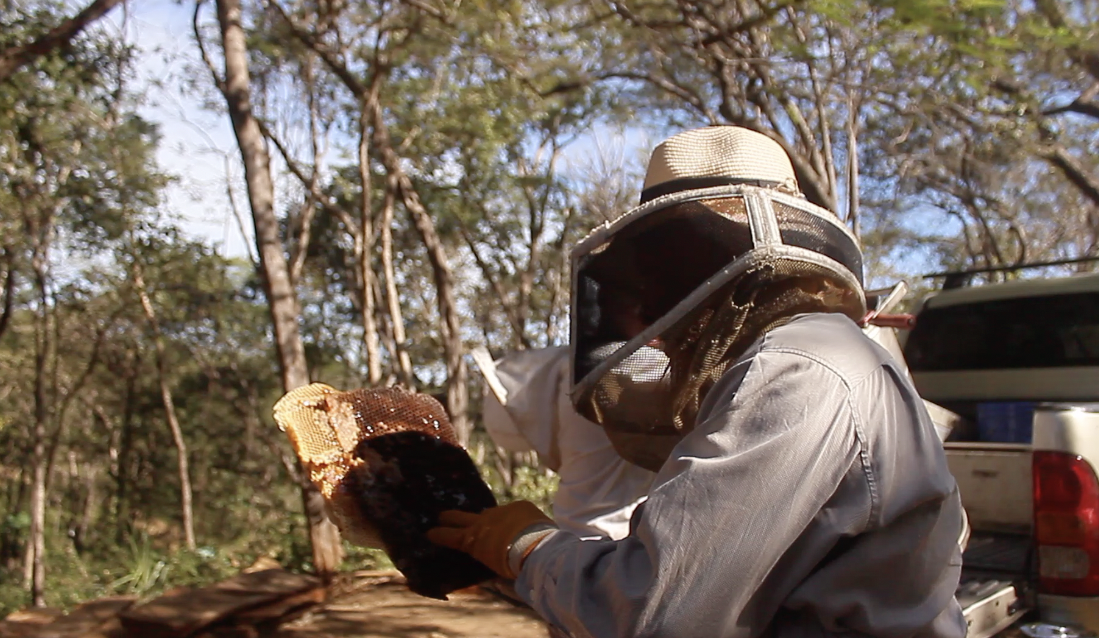Learning to Harvest Honey
There's this power that resides within drawing, I believe. I once painted a mural of a bee, and I feel like it followed me into my latest adventure. Working on a farm in Costa Rica has been a wonderful blessing. I had no idea that I was going to wake up and put on a suit to be next to bees!
It all started one morning when Kevin, the owner of the bees, took me to his farm. He gave me a suit, and we met up with the professional beekeepers. I recommend doing so with professionals if it's your first time. Bees can be dangerous if they aren't in the right conditions; they might feel threatened, their queen could be sick, or even if it is poor weather. Many factors can make the bees feel mad and defensive. The day we went, the beekeepers told us that the bees were mad. Not knowing why, three days later it rained. In the dry season of Costa Rica... We wouldn't have opened the box if we knew it was going to rain. So yes, they were buzzing. Feisty bees, zzzzzzzzz!
Tools that we used
A beehive smoker is a necessity for harvesting honey. It calms them down since we are practically taking their honey. It’s one of the most important tools to use. Filling the smoker with any suitable fuel source like wood chips, pine needles, or even dried leaves, we lit it up and approached the hive, giving a couple of puffs before even opening the hive box.
Opening the Beehive
Opening the box marked a turning point in the experience. Capturing images of this moment made me quite nervous, especially since my camera is black. Bees perceive colors like red and black as threats, viewing them as potential predators. This explains their attraction to vibrant flower colors. Indeed, they were heading towards my camera, prompting me to move it away as they clearly seemed to be in attack mode.
Gathering Beehive Knowledge
I found myself wishing I had my notebook at that moment, but here is everything I managed to gather. The species we were working with was a mix of ampis and Africanized bees. When they are born, they resemble small white worms nestled inside their cells, referred to as "crías" in Spanish. As they mature, they transform into bees, and the process continues from there...
The female bees are the ones that sting and perform all hive duties. while the male bees are the ones that go out to the flowers to collect the pollen. The queen that we couldn’t find is the one and only that reproduces the other bees.
Collecting the frames
The Hive was created inside this wooden box, that had the multiple frames so bees can create the beautiful yummy honey comb.
Inspecting the Honey Comb
Even if their isn’t any honey to harvest, inspecting the hive is important to do. Maintain the colonie’s healthy and alive.
Here we stripped some of the honey comb wax off from the frames before we put them in the converter.
To get the most out of the honey, the beekeepers pulled out this circular metallic machine, that you turn to release all the yummy honey that is inside the comb. Once it’s been spun for about 5 minutes then it’s all ready to be poured off into the container we brought.
Make it stand out
Whatever it is, the way you tell your story online can make all the difference.
Honey is ready to be taken back home!
Finally time to purify it!
Using this vintage coffee sock drip, I was able to pour the unpurified honey in and make it good to eat!









